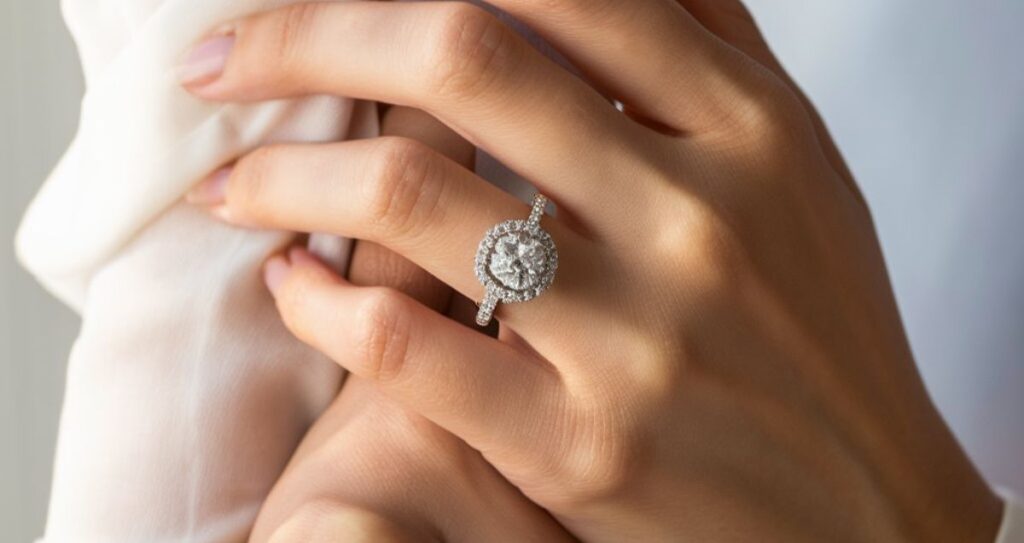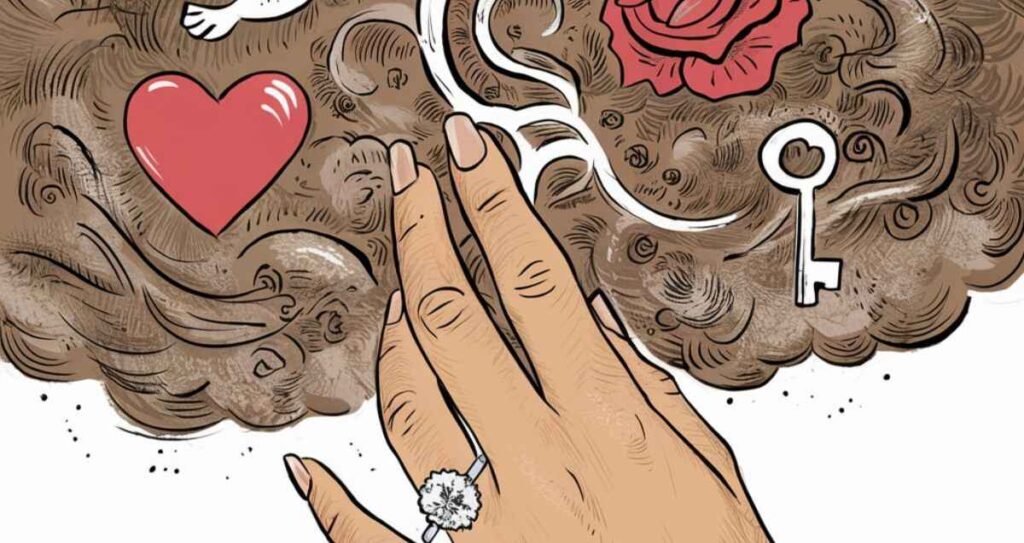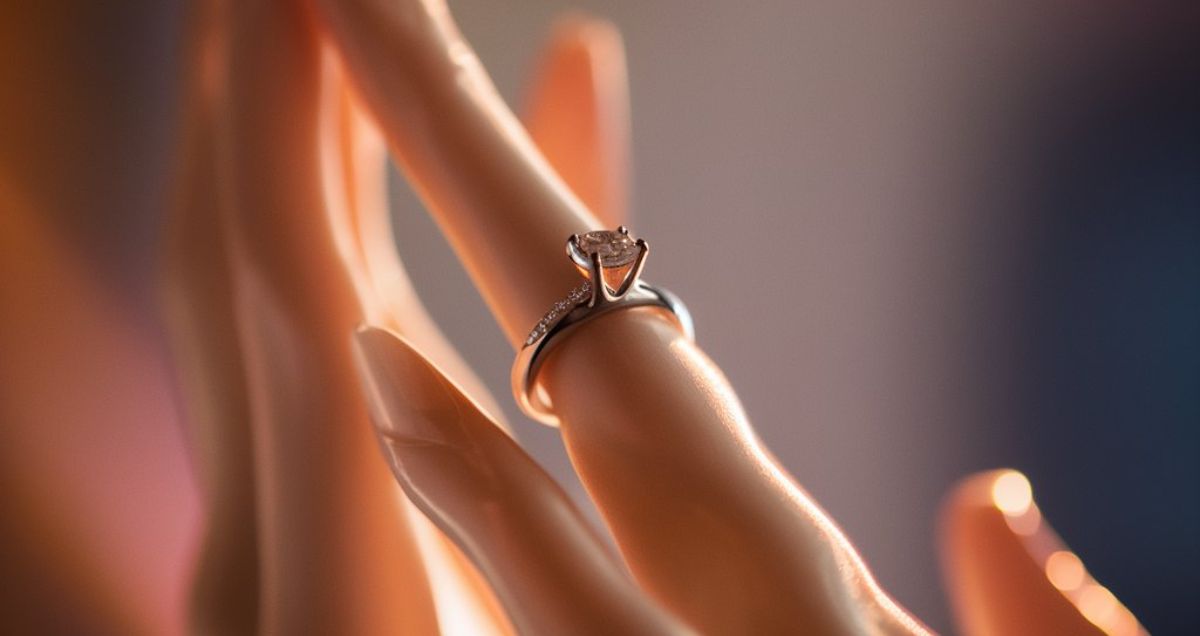The Engagement Ring Finger refers to the specific finger where an engagement ring is traditionally worn. In most Western cultures, this is the fourth finger of the left hand, symbolizing love and commitment.
Wondering which finger to place your engagement ring on? There’s more to it than tradition! Explore the history, meaning, and global variations behind the Engagement Ring Finger.
The Engagement Ring Finger is a centuries-old tradition with deep roots. While many wear it on the left hand’s fourth finger, customs vary by country and culture. Whether you follow tradition or create your path, understanding the cultural significance of this finger helps make your ring choice even more special.
Understanding the Tradition of the Engagement Ring Finger

Engagement rings have been symbols of love and commitment for centuries. The tradition of wearing an engagement ring on the “ring finger” of the left-hand dates back to ancient times, but did you know that not every culture follows this same practice? In some countries, the Engagement Ring Finger differs entirely. Understanding the tradition and meaning behind this custom can give you a better sense of how to honor it or how to adapt it to your personal preferences.
Historical Origins of the Engagement Ring Finger
Historically, the custom of placing the engagement ring on the fourth finger of the left hand traces back to the ancient Romans. They believed in a concept called the vena amoris, or “vein of love,” which was thought to run directly from that finger to the heart. This romantic notion solidified the left hand’s “ring finger” as the go-to spot for engagement rings.
However, this tradition is not universal. For example:
- In countries like Russia and Germany, couples wear their engagement rings on the right hand. This is because, in many Eastern European and Orthodox Christian cultures, the right hand is seen as more significant for religious ceremonies.
- In some Asian cultures, engagement rings are a relatively new phenomenon, but when worn, they tend to follow Western traditions.
Key Fact: Although the belief in the vena amoris has been debunked by modern science, it remains a symbolic reason why people still wear their engagement rings on the fourth finger of their left hand.
Why the Left Hand for Engagement Rings?
The left-hand holds a special place in many Western engagement traditions. Part of this might stem from the cultural importance of the heart and the idea that it’s more connected to the left side of the body. Even without the science to support this, the emotional symbolism remains powerful.
- Practical reasons also play a part: since most people are right-handed, placing the ring on the left hand keeps it safe from the wear and tear of daily activities.
- Symbolic connections to marriage: Many believe that the act of placing a ring on the left ring finger seals the bond, just like the wedding vows.
Cultural Variations: Engagement Ring Finger Around the World
While the left hand’s fourth finger is the standard in many Western countries, other cultures and religions follow different customs when it comes to engagement ring placement. Understanding these differences can be helpful if you’re part of a multicultural relationship or if you’re simply curious about the diversity of engagement practices.
| Country/Region | Engagement Ring Finger | Wedding Ring Finger |
|---|---|---|
| USA | Left Hand, Fourth Finger | Same as engagement finger |
| Germany | Right Hand, Fourth Finger | Right hand post-wedding |
| Russia | Right Hand, Fourth Finger | Same as engagement finger |
| India | Both hands, based on region | Left or right hand |
| Brazil | Right hand, fourth finger pre-wedding | Left hand post-wedding |
Case Study: Engagement Ring Finger in India
India offers a fascinating case study of ring traditions. Engagement ring customs vary widely across regions and religions. In Northern India, where Western traditions have more influence, couples often wear the ring on the left hand. However, in Southern India, rings are more commonly placed on the right hand as the left hand is traditionally considered impure.
This diversity highlights the importance of considering cultural background when deciding on your engagement ring finger.
Personal Preference vs. Tradition: How to Choose Your Engagement Ring Finger
While tradition holds a lot of weight in choosing an Engagement Ring Finger, personal preference is just as important. You should feel comfortable wearing your ring, and if that means straying from tradition, that’s okay!
Here are some factors to consider:
- Dominant hand: If you use your right hand for most tasks, you might want to wear your engagement ring on the left to avoid damaging it.
- Comfort: Some people find certain fingers more comfortable for wearing rings, so experiment before settling on the final placement.
- Matching your partner’s traditions: In multicultural relationships, you might consider wearing the engagement ring on one hand and the wedding band on another to honor both traditions.
The Symbolism of the Engagement Ring Finger

Each finger can carry its own symbolic meaning, so if you’re thinking of placing your ring on a non-traditional finger, here’s what each one might represent:
- Thumb: Wearing a ring here symbolizes willpower and individuality.
- Index Finger: This finger represents power, leadership, and authority.
- Middle Finger: Rings on the middle finger can signify responsibility and balance.
- Ring Finger (fourth finger): Traditionally symbolizes love, commitment, and romance.
- Pinky Finger: Often associated with confidence and independence.
It’s worth noting that these meanings can change depending on cultural context, so consider what feels most significant to you.
Breaking the Rules: Modern Trends in Engagement Ring Placement
These days, more and more couples are opting to break from tradition and place their engagement rings on whichever finger they prefer. Celebrities, for example, have been seen wearing rings on their middle or index fingers, creating new trends in jewelry fashion. In an era where self-expression is key, the engagement ring can become a way to show off both your love and your personality.
Frequently Asked Questions
Can I wear my engagement ring on my right hand?
Absolutely. Many cultures prefer the right hand for engagement rings, and in the end, it’s about what feels right for you.
What happens to the engagement ring after the wedding?
Most people wear both their wedding band and engagement ring on the same finger, but some opt to move the engage-ment ring to a different hand or finger.
Can men wear engagement rings?
Yes, increasingly, men are choosing to wear engagement rings as well. There’s no “right” or “wrong” way to symbolize your engagement.
Conclusion
Ultimately, choosing which fin-ger to wear your Engage-ment Ring Finger on is a deeply personal decision. While tradition offers guidance, your comfort, preferences, and cultural background should influence your choice. Whether you follow the ancient practice of the vena amoris or forge your path, the most important thing is the meaning behind the ring itself.
Remember, the engage-ment ring is a symbol of your love and commitment, and the fin-ger you wear it on is just one part of the story.
Welcome to FashionTrista! I’m David Mark, and I’m excited to share my passion for fashion with you. At FashionTrista, we offer a curated selection of the latest trends, style tips, and fashion advice to keep you ahead of the curve. Whether you’re looking for outfit inspiration or expert guidance, FashionTrista is your go-to resource for all things fashion. Explore with us and redefine your style journey.

